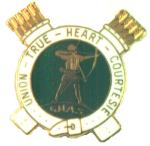As the hours passed, I occasionally heard him making reference to orders, artwork, "shells," "cards," and other manufacturing-type terms. When we finally struck up a conversation (prompted by a third party who asked to sit down at the empty seat across from me), I asked what business he was in. Advertising, he said. He handles promotional materials for his firm's clients.
So he makes things. Material things. And I was reading about the making of things, from an earlier age. In my book, the material things were being made by hand, and reflected something of the maker's values, or ideals, or sense of self, or way in which she wanted to be perceived by others, or receipt of cultural tropes. These items were one of a kind, but nevertheless part of a tradition.
We frequently engage in handwringing in America about not making anything anymore. It occurred to me that usually I sit in Starbucks and overhear people making websites or planning revivals. Here was a guy whose business was making things. Well, putting corporate logos on mass-produced things of little value made in third-world countries, to be more exact. But because of his labor, material things were coming into existence. Whose values, ideals, sense of self, desired image, or cultural norms were reflected by those things, I wondered? As I knit my scarf, I thought about the way material things come into being. And I thought that it would be worthwhile if the students in my class this fall reflect on the differences between my Starbucks neighbor and me -- and the similarities.





No comments:
Post a Comment